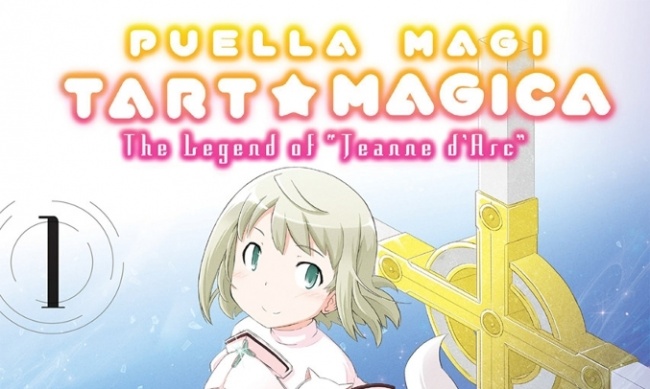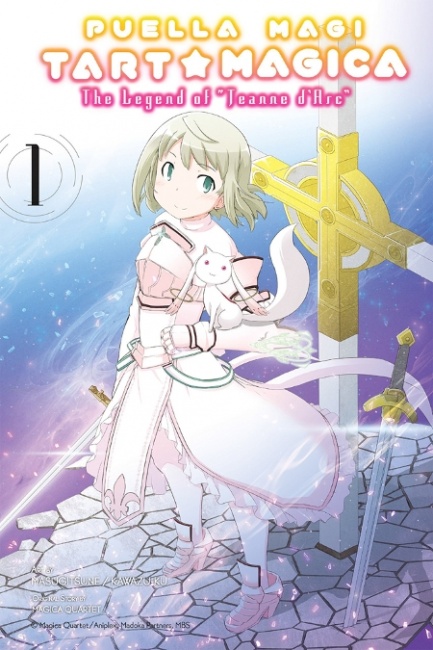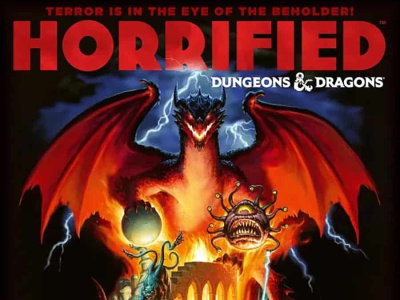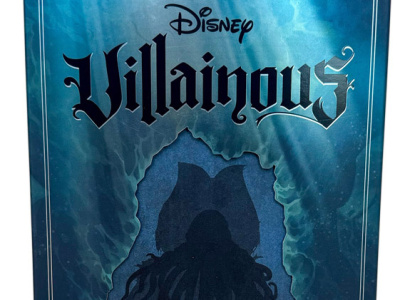Puella Magi Tart Magica Vol. 1: The Legend of Jeanne d'Arc TP
Publisher: Yen Press
Release Date: April 21, 2015
Price: $13.00
Creator(s): Magica Quartet (story), Masugitsune and Kawazu-Ku (art)
Format: 164 pgs., Black & White, Trade Paperback
ISBN: 978-0-3163-8314-1
Age Ratings: Older teen, for language and violence
ICv2 Ratings: 2 Stars out of 5
This disappointing manga tries to fill the previously-unknown gap between Sailor Moon and Claymore. The overly long title comes from the vagaries of 14th century spelling, since "d'Arc" was spelled "Tart" in at least one document. The individual panels of artwork are very good, but the art does not flow naturally from panel to panel, and often the sound effects are the only clue as to how a character got from point A of panel 1 to point B of panel 2. There are sound effects which are translated as "leap," "glance," "blink" or "turn." No, really. I didn’t know that glancing made a sound, but in this case, the label is necessary in order to understand the intention of the artist in that panel.
The story itself is a deranged retelling of the story of Joan of Arc, whose "angels" led her to both glory and death. In this case, one of the "angels" is a lop-eared cat-rabbit with halos around the drooping ears, who offers Jeanne a wish, in return for agreeing to become a "magical girl" and fight against witches, whose definition seems to change. They're either monsters summoned by magicians, or former magical girls who have fallen to evil by using up their magic fighting witches. Or both, as the author sees fit. The only example shown in this volume is a giant woman-like creature with an owl in place of legs, so she could have started out as anything.
There are heavy hints that Jeanne's benefactor isn’t telling the whole truth about anything, so it quickly becomes an "unreliable mentor" story or a "deal with the devil" story, or both. Apparently, her companion "Riz" is really Elizabeth Hawkwood, a gender-reversed version of the historical John Hawkwood, who would have been fighting against Jeanne.
There is a very nice brief history of the Hundred Years War at the end, along with a better explanation of Jeanne's family than that provided in the manga itself.
For older teens and up, due to one sequence with graphic violence.
--Nick Smith: Library Technician, Community Services, for the Pasadena Public Library in California.

ICv2 Stars: 2 (out of 5)
Posted by Nick Smith on May 12, 2015 @ 4:55 am CT
MORE COMICS
Column by Rob Salkowitz
August 5, 2025
In this week's column by Rob Salkowitz, he looks at the industry's biggest show, held in the midst of some existential issues.
On Growth in 2024, YTD 2025, Retailer Tiers, New Functionalities
August 5, 2025
We talked about the growth of comics on the platform last year, what's happening in 2025, the use of retailer tiers, and new functionalities being used for comics.
MORE REVIEWS
ICv2 Stars: 3.5 (out of 5)
July 30, 2025
Here is a review of Ravensburger's Horrified: Dungeons & Dragons.
ICv2 Stars: 3.5 (out of 5)
July 24, 2025
Check out the review of Disney Villainous: Treacherous Tides, from Ravensburger.








